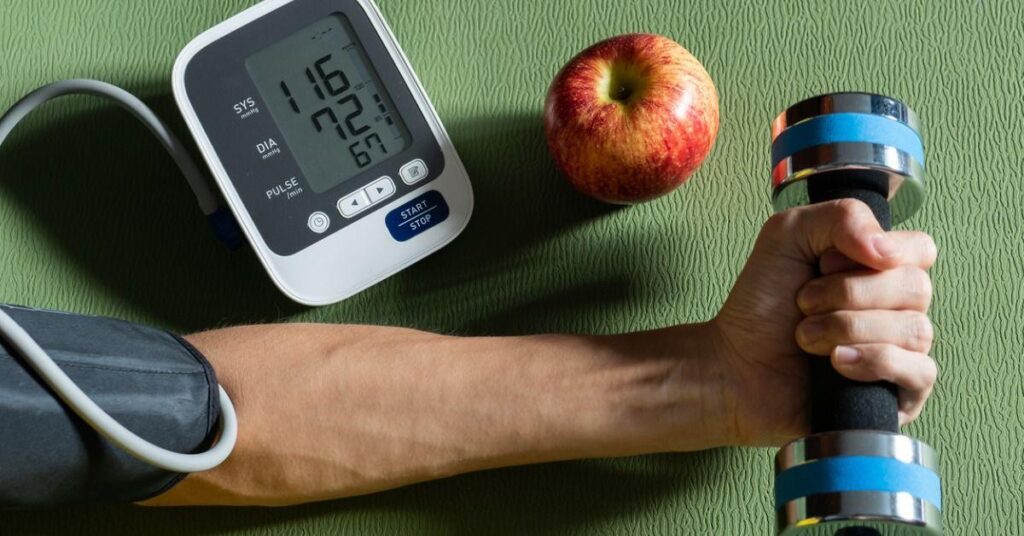Keeping a healthy heart requires a healthy diet and lifestyle. Alternative therapies and lifestyle modifications may help you have a healthier heart and lower your risk of a heart attack. However, make sure that any lifestyle changes you adopt don’t interfere with your medications. Always get medical advice before using any alternative medicines.
When heart attack symptoms occur, alternative treatments are not advised. A heart attack is a life-threatening condition which should be treated by experienced emergency medical staff as soon as possible.
Among essential things that individuals can do for their health is strengthen their hearts. And, as you know, exercise is the most effective way to improve your core. If you don’t exercise, you’re more than twice as likely as someone who does develop heart disease. You should create a regular exercise routine if you have a history of heart problems or are worried about your heart health. Experts suggest that people should exercise for at least 150 minutes per week.
Five factors can have a massive effect on your heart:
- What you eat.
- How much do you walk?
- Whether you keep smoking.
- How well do you maintain your cholesterol and blood pressure?
Tips & recommendations for a heart-healthy diet
It’s a routine to eat well for a healthy heart. It doesn’t rely on a particular item or nutrient but instead on what you consume over several days, weeks, and months.
This diet is naturally low in saturated and trans fats, salt, and refined sugar. It includes a lot of whole grains, fibre, antioxidants, and unsaturated fats.

- Consume more fruits and vegetables
A varied vegetables and fruits diet has been interconnected to healthier hearts and a reduced risk of heart disease.
- Make the change to whole grain flour.
Wholegrain food contains a higher percentage of organic grain. It indicates they have higher dietary fibre, vitamin b, vitamin E, and healthy fats.
- Make good fat choices.
Monounsaturated (omega-3 )and polyunsaturated fats (omega-6) are the best fats to include in your diet. These healthier fats can be found in avocados, nuts, fish, and sunflower seeds.
- Instead of salt, use herbs and spices.
Excessive salt consumption is harmful to the heart. Salt contains sodium that can raise your blood pressure, a critical significant risk factor for heart disease.
Tips for understanding and controlling your cholesterol levels
Cholesterol is a fatty component that circulates in your blood. Your body naturally produces cholesterol, which can also be present in some foods. Cholesterol is necessary for your body’s basic functioning.

Cholesterol is categorized into two kinds:
- HDL, or ‘good cholesterol,’ is high-density lipoprotein.
- LDL, or “bad cholesterol,” is a type of low-density lipoprotein.
Plaques form when ‘bad cholesterol’ adheres to the walls of your arteries, producing a build-up of cholesterol. The accumulation of these plaques can create occlusions in your arteries, raising the chances of heart attack or stroke risk. The CT coronary angiography test is useful in the diagnosis of these plaques.
- Explore the different types of fats in your diet
Saturated and trans fat consumption can raise blood cholesterol levels. Pizza, cakes, biscuits, pastries, and deep-fried foods include saturated and trans fats. You should avoid these foods for a healthy heart.
- Consume a heart-healthy diet
Fresh foods should comprise the majority of your diet. Choose a variety of fruits and vegetables and healthy sources of protein such as fish and seafood, lean meat, chicken, legumes, nuts, and seeds.
- If your doctor recommends medication, take it exactly as directed
The effective way to accomplish your treatment goals and take advantage of improved heart health is to follow your physician’s or pharmacist’s advice and take medications exactly as directed.
Tips for understanding and controlling your blood pressure
Your blood creates blood pressure on the walls of your arteries as your heart circulates it throughout your body. It’s an essential part of how your heart and circulatory system function.

One of the primary risk factors for heart disease is having high blood pressure for a long time. The chances of developing severe high blood pressure rise with age.
- Be active
Being physically active regularly helps prevent high blood pressure and lowers your possibility of having a heart attack or creating heart disease.
- Minimise your salt intake
Consuming a high-salt diet can increase blood pressure. Consuming more than 5 grammes (a teaspoon) of salt per day raises your risk of heart disease and stroke.
- Understand your numbers
High blood pressure is unnoticeable. That’s why it is critical to have it inspected and learn how to handle it. The Lipid profile test is useful for determining the condition of the blood and heart.
7 Best Workouts for a Healthy Heart
Weight training
Your heart will benefit from strengthening the other muscles in your body. Weight lifting will help you gain muscle mass while also burning fat. Although you can exercise with weights in the gym, some of the most efficient weight training is done with your body weight. Push-ups, squats, and even pull-ups help you gain muscle while improving your bone and heart health.
Swimming

Swimming it’s not just for hot summer days. Swimming practice sessions or taking a water aerobics class can be full-body exercises that enhance your body and cardiovascular system. Unlike other forms of exercise, Swimming is gentle on your joints and allows you to move your body without discomfort.
Yoga
Yoga is Helpful to one’s heart health, despite appearances. Yoga will help you strengthen and develop your muscles. Definite types of yoga can raise your heart rate while also providing the sense of peace required to lower your blood pressure.
Consider yourself in a high-stress position. Breathing exercises are usually one of the first things you do to relax. Pranayama yoga is a breathing-based practice that focuses on inhaling and exhaling, meditation, and relaxing. After a particularly rough day, a 60-minute yoga class can help you get back on your path and decrease anxiety.
Training Intervals/ High Intensity

Raising and reducing your heart rate helps burn calories and enhances blood vessel function. Interval training is a method to get a full-body workout in a short amount of time by alternating between a rapid succession of high-intensity activities and more extended periods of active recovery. For example, you could run for one minute and walk for three minutes afterwards before repeating the cycle.
Cycling
Getting on your bicycle could do more than just transport you from one location to another. Cycling has been shown to help lower heart disease risk. It works the large muscles in your legs, which increases the heart rate. Cycling has been meant to boost your mental health as well.
Whether you go to a yoga class three times a week, go out for a walk with a friend, or swim each morning, physical activity is essential for heart health. Always contact your physician before beginning an exercise routine.
By Playing Tennis
Tennis has countless cardiovascular benefits due to its aerobic essence. Tennis also meets and retains the maximum heart rate criteria (60 to 90 per cent), which is ideal for aerobic conditioners.
Tennis will also help you with the following things:
- Strength and muscle tone
- Interaction
- Harmony/ Balanced
- Flexibility
- Intensity
Running
Running helps to reduce blood pressure as well as cholesterol. “Running 30 minutes a few times each week helps to reduce low-density lipoprotein (LDL), the “bad” kind of cholesterol, and raises high-density lipoprotein (HDL), the “good” kind of cholesterol,” according to the study.
Running reduces the burden on your heart. Because runners’ hearts are more substantial, they usually have a lower resting pulse rate and consume more oxygen. As a result, the organ can control pumping more blood per beat, enabling the heart to do more efficiently.
Running decreases your risk of developing heart disease. Those who begin running on a routine basis have a 35 to 55 per cent lower risk of heart disease. “Running aids in the prevention of blood clots in the arteries and blood vessels.” It also promotes the normal flow of blood, blood pressure, and cholesterol levels. Before starting a new exercise routine, schedule a medical test and consult with your doctor.”














